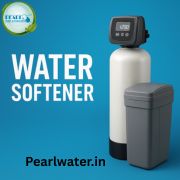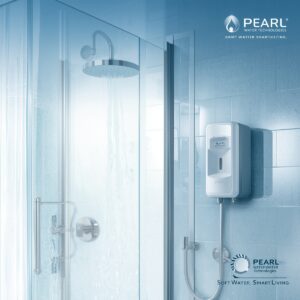Introduction
Have you ever noticed that pure water from a good purifier not only looks clean but tastes incredibly fresh? That magic touch comes from the Post Carbon Filter — the final stage in most water purification systems. This component ensures your drinking water is crystal-clear, odor-free, and refreshing with every sip.
What Is a Post Carbon Filter?
A Post Carbon Filter is the last filtration stage in RO and other water purification systems. It refines the water that has already passed through various filters, improving its taste and smell. Made from activated carbon, this filter removes any residual impurities or odors that might remain after purification.
Why It’s Called the “Polishing Filter”
The post-carbon filter is often called the “Polishing Filter” because it enhances the final taste of water. Just like a jeweler polishes a gem to bring out its shine, this filter “polishes” your water, giving it that crisp, refreshing flavor.
How Does a Post Carbon Filter Work?
When purified water passes through the post-carbon filter, the activated carbon adsorbs trace organic compounds, odors, and gases that may still be present. This final purification ensures that every drop you drink is not only safe but also pleasant-tasting.
The Science of Activated Carbon
Activated carbon has millions of microscopic pores that capture impurities. These pores increase the surface area for adsorption, allowing the filter to trap chemicals and odors efficiently. The result? Fresh, odorless, and great-tasting water every time.
Types of Post Carbon Filters
6.1 Inline Post Carbon Filter
Inline filters are compact and easy to install, often placed directly in the water line after the RO membrane. They’re perfect for home RO systems.
6.2 Block Post Carbon Filter
These filters use compressed activated carbon blocks for a denser filtration surface, offering even higher purification efficiency.
Role of Post Carbon Filter in RO Water Purifiers
In an RO system, the Post Carbon Filter acts as the finishing step. After the RO membrane removes dissolved salts and contaminants, the post-carbon filter eliminates any residual odors or tastes left behind — ensuring your water is perfectly clean and refreshing.
Key Benefits of Using a Post Carbon Filter
Improves taste and odor of water
Removes residual chemicals and gases
Enhances drinking experience
Complements RO purification for maximum purity
Easy to replace and maintain
Difference Between Pre and Post Carbon Filters
Feature
Pre Carbon Filter
Post Carbon Filter
Position
Before RO membrane
After RO membrane
Purpose
Protects RO membrane from chlorine and chemicals
Enhances taste and odor of purified water
Main Function
Removes chlorine and organic compounds
Polishes water for final consumption
Both are essential — the pre-filter protects, and the post-filter perfects.
When Should You Replace Your Post Carbon Filter?
It’s recommended to replace your post-carbon filter every 6 to 12 months, depending on water usage and quality. Over time, carbon pores fill up, reducing efficiency and allowing unpleasant tastes to return.
Signs Your Filter Needs Replacement
Water tastes bitter or smells odd
Reduced water flow
Visible discoloration or residue
It’s been over 12 months since last replacement
Maintenance Tips for Long-Lasting Performance
Always use genuine filters from trusted brands
Flush the system after replacing the filter
Clean other components regularly
Monitor water taste and flow rate frequently
Common Myths About Post Carbon Filters
Myth 1: Post carbon filters are optional.
Fact: They’re essential for taste and odor removal.
Myth 2: They remove dissolved salts.
Fact: They primarily remove odors and organic compounds, not TDS.
Myth 3: Any carbon filter works the same.
Fact: Quality and design affect performance significantly.
Environmental Advantages of Using Carbon Filters
Using post-carbon filters reduces your reliance on bottled water, cutting down plastic waste. Many high-quality filters use eco-friendly coconut shell carbon, which is renewable and biodegradable.
How to Choose the Right Post Carbon Filter
Check compatibility with your RO system
Look for NSF-certified or ISI-approved filters
Choose coconut shell activated carbon for better results
Buy from reliable brands like Pearl Water Technologies
Conclusion
The Post Carbon Filter might be the last stage of purification, but it’s the first thing you notice when you taste your water. It removes residual odors, enhances flavor, and ensures every sip is pure and refreshing. Think of it as the “finishing touch” that turns purified water into perfect water.
Investing in a good post-carbon filter means investing in your health, comfort, and peace of mind. So, make sure you give your RO system the right “polishing” it deserves!
FAQs
1. What does a post carbon filter do?
It improves the taste and removes odors from purified water after RO filtration.
2. How often should I change the post carbon filter?
Every 6–12 months, depending on usage and water quality.
3. Is it okay to drink water without a post carbon filter?
It’s safe but may have a flat or unpleasant taste. The filter enhances flavor.
4. Can a post carbon filter remove chlorine?
Chlorine is mainly removed by the pre-carbon filter. The post filter focuses on taste and odor.
5. Are post carbon filters eco-friendly?
Yes, especially those made from coconut shell-based activated carbon.



